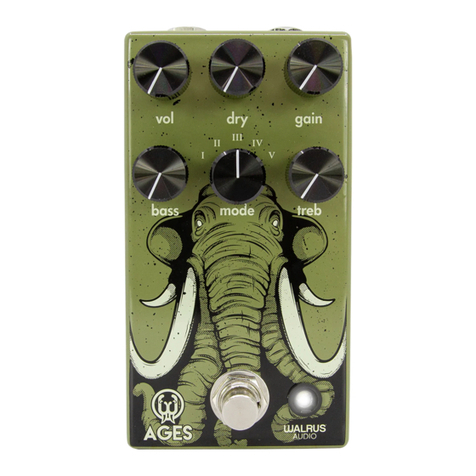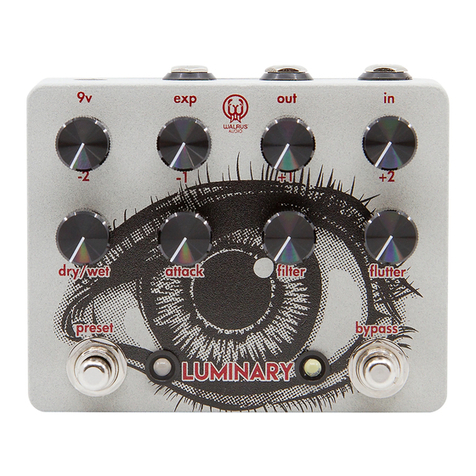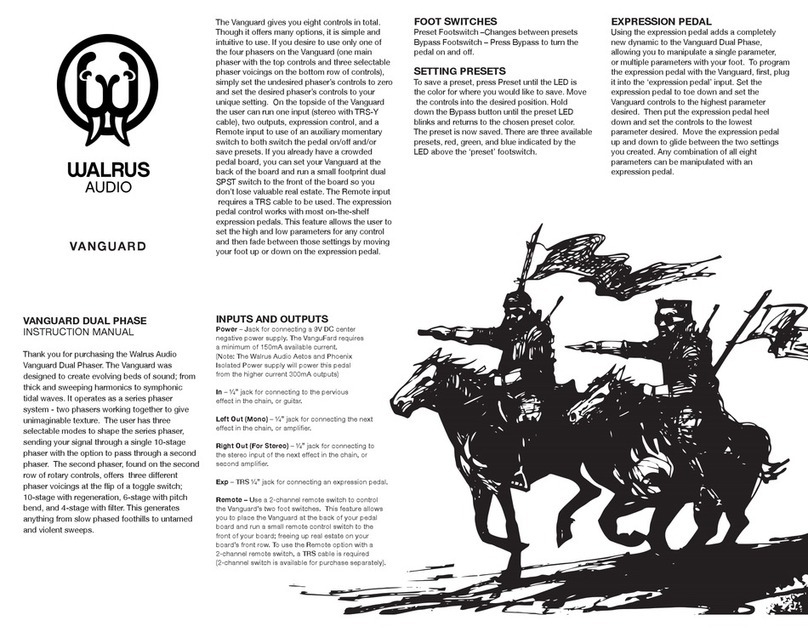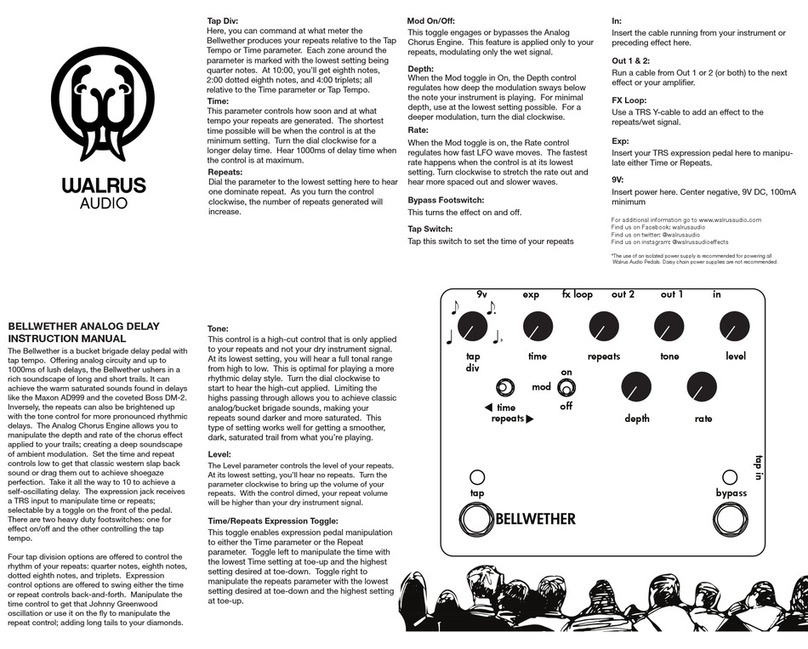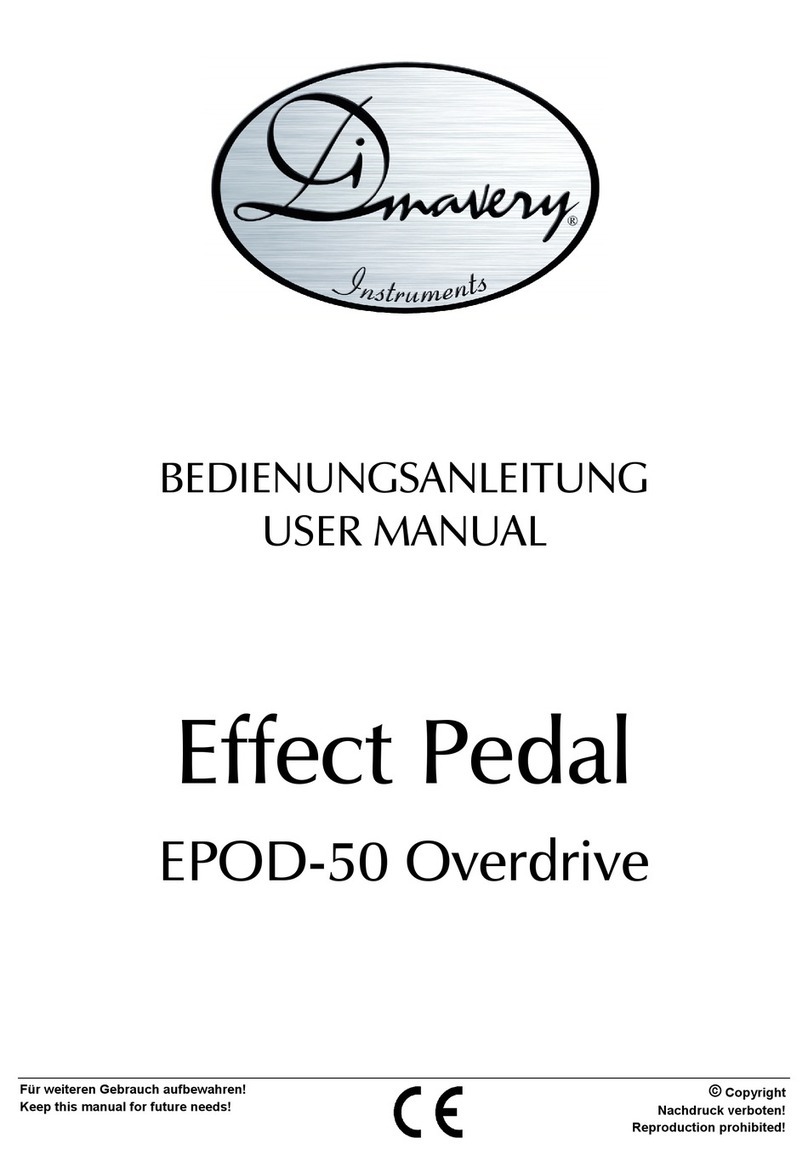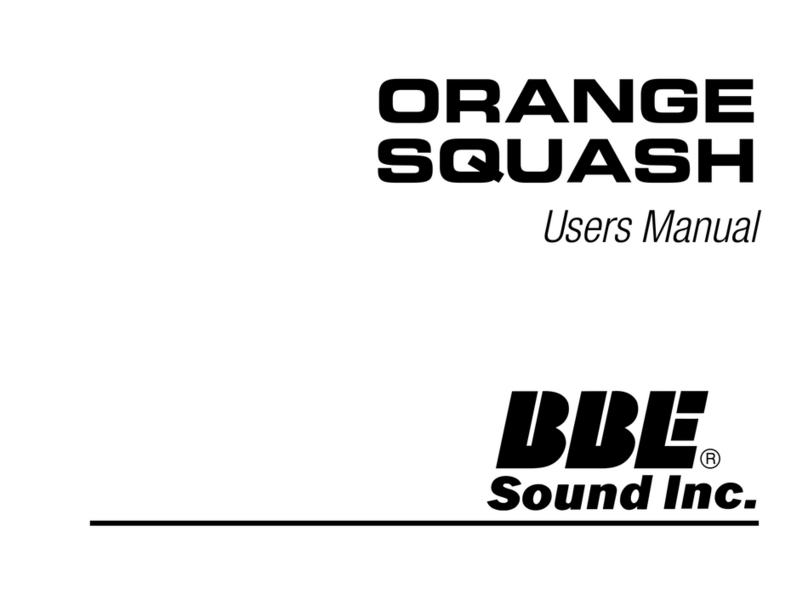
DI (Direct Injection) – Use DI mode when connecting an unbalanced, high impedance source (Electric
Guitar, Bass Guitar, etc). The signal will be reduced by -20dB (-35dB with pad engaged) and converted
to a balanced signal via the transformer connected to the XLR output. Use the gain on your mixer or
preamp to bring the signal up to line level.
LI (Line Isolator) - Use LI mode when connecting your unbalanced, low impedance source (Amp + Cab
Sim like the ACS1, keys, etc.). The signal will remain full volume and be converted to a balanced signal
via the transformer connected to the XLR output. Less preamp gain will be required in LI mode.
Note - When deciding between DI or LI, check with the manufacturer of your gear to find
the output impedance of the device you are wanting to interface. For a general guide:
High Impedance = anything above 1k = Use DI
Low Impedance = less than 1k = Use LI
If you lose high-frequency information when using LI mode, then you should probably be
in DI mode. Both left and right channels are affected when using the DI/LI switch.
PAD – Enables a -15dB input pad (Only in D.I. mode) for reducing hot signals in order to minimize
distortion.
GND LIFT – Isolates the GND pin on XLR to help reduce hum if present. Leave out for normal operation.
SUM – When disengaged (out), the left input connects to the left thru. The right input connects to the
right thru allowing the use of stereo amplifiers.
When engaged (in), Sum connects the left and right thru jacks together to combine the signals for
running into a single amplifier (use either thru jack).
THRU - The Thru jack is a pass through that can be plugged into a guitar amp or other source.
You are the artist. Your sound is the paint, and
this is your canvas. After years of creating tone-
painting devices, Walrus Audio is releasing
The Canvas Stereo Direct Box/Line Isolator. The
Canvas is designed to remove any resistance
between you and your audience by giving a
pristine, sonic foundation upon which to build
your dual-channel masterpiece. From houses of
worship to the dive bar downtown, Canvas Stereo
is built to be the performance palette that goes
wherever you are making your music.
STEREO
CANVAS
WHEN TO USE THE CANVAS
AT THE VENUE
AT THE STUDIO
VARIOUS INSTRUMENT RECORDING
KEYS/SYNTH
GUITAR
GUITAR
CANVAS
CANVAS
CANVAS
DSP AMP
DSP AMP
FRONT OF HOUSE
FRONT OF HOUSE
DAW
Use Canvas Stereo to connect your instrument to
a variety of sources. The following diagrams are a
few examples of use cases. Fun tip: The left & right
jacks are independent and can also run two mono
sources.
USE THE THRU FOR TWO DIFFERENT OUTPUTS
GUITAR CANVASDSP AMP FRONT OF HOUSE
AMP
XLR OUT
THRU OUT


